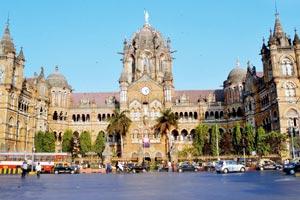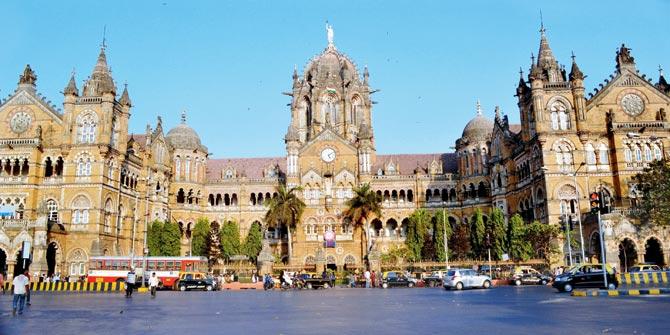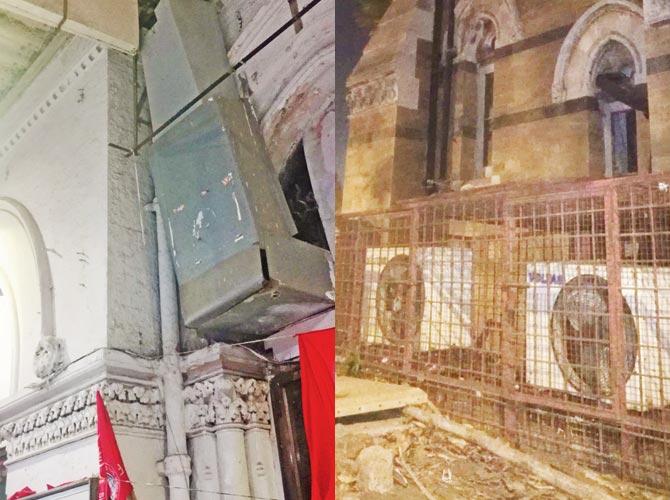Just weeks after its proposal to convert the heritage station into a museum was scuttled by higher-ups, Central Railway is back with another controversial plan


mid-day's April 10 report on the PMO's reservations about the museum at CSMT
ADVERTISEMENT
Just a month after Prime Minister Narendra Modi raised doubts about Railway Minister Piyush Goyal's pet project to convert the heritage CSMT building into a transport museum, the Central Railway has now embarked on yet another potentially controversial project. The CR plans to instal central air-conditioning in the Victorian-era structure.
CR has floated a R6.2-crore work order to air condition Chhatrapati Shivaji Maharaj Terminus (CSMT) — a UNESCO-listed World Heritage Site. But it will be very uncool if the air conditioning units mar the Victorian elegance of the building, warned conservation experts.
Part of museum plan
Railway officials said that central air-conditioning was part of the museum plan. They added there will be no compromise on the heritage of the building, and that they shall consult experts before they embark on the project.

Individual AC units already mar the facade and interiors of the Victorian-era building, a UNESCO-listed World Heritage Site
This is not the first time that CR has undertaken a controversial renovation project at CSMT. On December 2, mid-day broke the story about a proposal to convert the first two floors into a transport museum and shift railway employees to a new office. This paper was also the first to report the disappointment of the descendant of FW Stevens, who had designed the iconic terminus ('It'll be a shame if CSMT is turned into a museum', December 7). After protests from several quarters, and a review meeting with the PM, the plan was put on hold.
'It'll be an improvement'
mid-day has a copy of the tender floated, which calls for central AC using Variable Refrigerant Flow system to cover all indoor units of the building. The order mentions that the system should be suitable for operation at ambient temperatures up to 41°C.
CR executives refused to speak on record, but assured that it was the best system in the given circumstances. A senior official said, "The VRF system can be installed with minimal impact on the building's architecture and daily operation. The flexible and modular systems range from ductless systems that install into tight spaces to low-profile ducted systems. They tend to blend into the décor and furnishings. As a result, high ceilings and other designs can be preserved well. The equipment can fit into tight spaces."
"In fact, the building now has so many small cabins and AC units, those are causing more damage. This system will be an improvement," he added.
Experts sceptical
Rahul Chemburkar, conservation architect, remains sceptical. "While introducing major service interventions, such as central air conditioning, in major heritage edifices, we need to do it with sensitivity, and not randomly. It has to be done after great thought, and needs to be a part of a bigger management plan. One needs to take the advice of conservation experts," he said.
"This building was designed for natural air conditioning, it does not require artificial air conditioning. This building was not designed as a railway museum and, hence, is not the right place to build one there. A railway museum should be built along the lines of the York railway museum," said Aadil Desai, Mumbai art and history
enthusiast.
41°C
Max temperature at which the AC system is expected to work
Rs 6.2cr
Value of the work order floated for the central AC
Catch up on all the latest Crime, National, International and Hatke news here. Also download the new mid-day Android and iOS apps to get latest updates
 Subscribe today by clicking the link and stay updated with the latest news!" Click here!
Subscribe today by clicking the link and stay updated with the latest news!" Click here!






